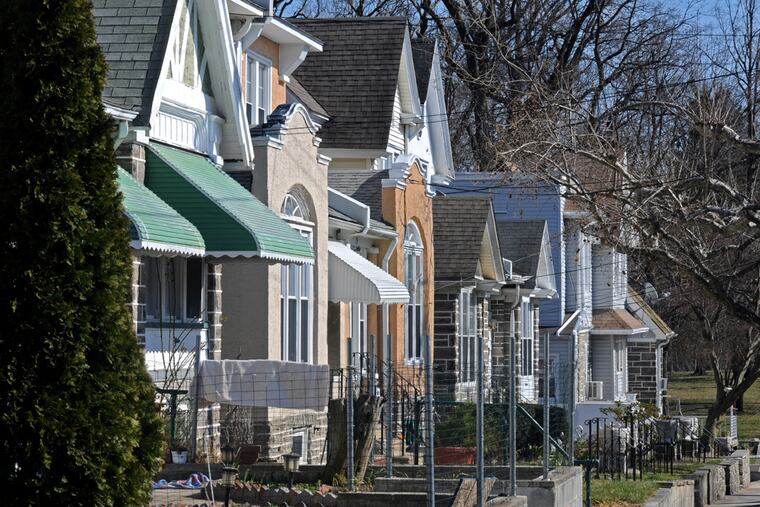Why home equity matters when you try to refinance your mortgage
Low interest rates are making it tempting to refinance your mortgage, but remember: When it comes to refinancing, home equity matters.

Today’s low mortgage rates have more homeowners dreaming of a lower rate, and the smaller monthly payments that go with it, but it’s important to remember that, when it comes to refinancing your mortgage, home equity matters.
How much home equity do I need?
For conventional refinances, you’ll need at least 20% equity in your home to avoid private mortgage insurance, or PMI. This also means you generally need a loan-to-value (LTV) ratio of no more than 80%.
Home equity is the cash value in your home. For instance, if your home is valued at $300,000 and you owe $200,000, your home would have $100,000 of cash value, or equity. If you don’t have enough home equity, PMI may be required. This is a type of insurance borrowers pay to protect the lender in the event the borrower defaults on the loan.
For those who are underwater on a home loan (in other words, you owe more than the home is worth), or have little to no equity, your options include two programs from Fannie Mae and Freddie Mac.
» READ MORE: What is predatory lending? Warning signs to watch for when you take out a mortgage
Fannie Mae, Freddie Mac refinances for low- to no-equity mortgages
Fannie Mae and Freddie Mac were created by Congress to provide stability and affordability to the mortgage market. Both companies buy mortgages from lenders, which means they may own your mortgage. In fact, they own or back more than 90% of home mortgages in America.
Anticipating the end of the Home Affordable Refinance Program (HARP) created during the Great Recession, the Federal Housing Finance Agency worked with Fannie Mae and Freddie Mac to develop new refinance programs targeting existing high loan-to-value loans, said Maria Fernandez, senior associate director for the agency’s Office of Housing and Regulatory Policy.
Two options are the Freddie Mac Enhanced Relief Refinance Mortgage and the High LTV Refinance Option from Fannie Mae. Though they have different names, both programs, which are for people who have existing Freddie Mac or Fannie Mae mortgages and who meet certain eligibility requirements, are quite similar, Fernandez said.
“The programs offer a simplified process, and require a borrower benefit such as a lower payment, more stable product, or a shorter term, which fosters mortgage sustainability and helps to minimize credit losses to Fannie Mae, Freddie Mac, and taxpayers,” Fernandez said.
» READ MORE: Mortgage lenders demand higher credit scores as the coronavirus threatens the housing market
Here are the key details of each program:
High LTV Refinance Option from Fannie Mae
Like the Freddie Mac program, the High LTV Refinance Option from Fannie Mae is designed for existing Fannie Mae borrowers who are making their mortgage payments on time but whose loan-to-value ratio exceeds the maximum allowed for standard limited cash-out refinance transactions. The minimum LTV requirement varies depending on the number of units in the home and whether you’re doing a cash-out refinance or limited cash-out refinance, but generally ranges from 75% to 97%.
The program requires that borrowers benefit from the refinance in at least one of several ways:
Reduced monthly principal and interest payment.
Lower interest rate.
Shorter term.
More stable mortgage, such as shifting from an adjustable-rate mortgage to a fixed-rate mortgage.
The High LTV loan also offers simplified employment, income, and asset documentation requirements.
Freddie Mac Enhanced Relief Refinance Mortgage
The Freddie Mac Enhanced Relief Refinance Mortgage is aimed at borrowers who have existing Freddie Mac mortgages and are making timely payments but are unable to take advantage of standard “no cash-out” refinance programs because their mortgage exceeds maximum loan-to-value limits. Depending on the kind of property, the program accepts borrowers with LTV ratios as high as 97%.
In particular, the Enhanced Relief Refinance targets borrowers who have been unable to refinance due to declining property values.
Conventional 15-, 20-, or 30-year fixed-rate mortgages are eligible for this program. Also noteworthy, all occupancy types are able to participate.
To qualify, your mortgage must not have been 30 days delinquent during the last six months. In addition, it must not have been 30 days delinquent more than once over the last 12 months.
» READ MORE: You can apply for mortgage and rent assistance in Pennsylvania right now. Here’s how.
Do you have a Fannie Mae or Freddie Mac mortgage?
If you’re unsure whether you have a Fannie Mae or Freddie Mac mortgage, you can check your loan online at Fannie Mae Loan Look-Up or Freddie Mac Loan Look-Up.
Once homeowners determine whether their mortgage is owned or guaranteed by Fannie Mae or Freddie Mac, they can pursue a refinance through either their existing lender or any other lender approved to do business with Freddie Mac or Fannie Mae.
Personal loan, then refinance option
Another option for homeowners who may be underwater on their mortgage is paying down the amount owed with a personal loan, said Joseph Polakovic, owner of Castle West Financial.
After paying down the mortgage and conducting the refinance, the homeowner might consider applying for a home equity line of credit (HELOC) and using the funds to help pay off the personal loan, Polakovic said.
“Ultimately, this would lower their effective borrowing interest rate, as they would have brought down the interest rate and loan amount on their home from the refinance,” he said.
Bear in mind that economic uncertainty can make it difficult to get a personal loan unless you have good credit, and some lenders have ceased HELOC applications temporarily. Overall, this option requires understanding exactly how much new debt (in the form of the personal loan) you can take on while still falling below the maximum debt-to-income allowed for a refinance. If you’re unsure about any of this, consult a financial adviser before proceeding.